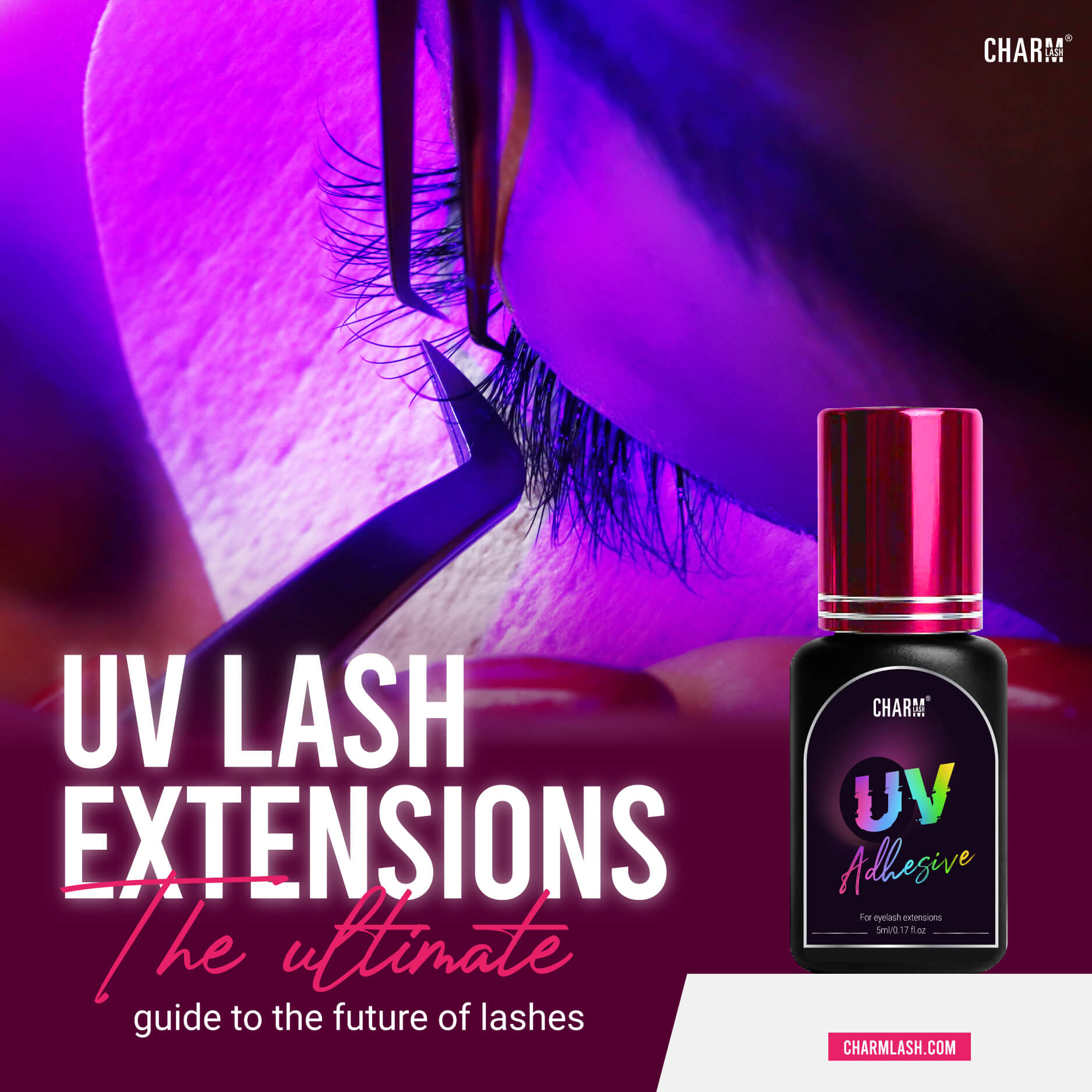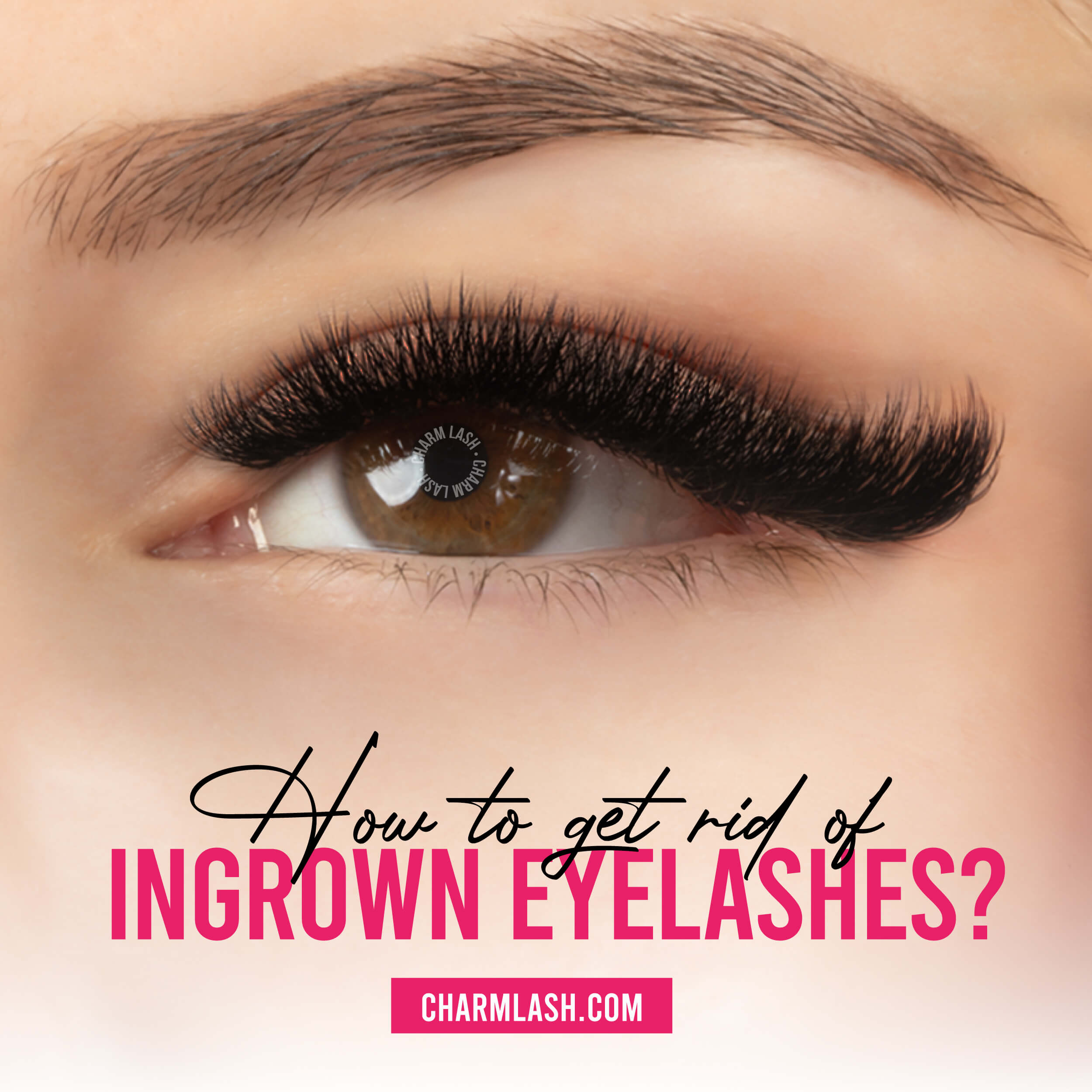Lash extensions can give clients beautiful, voluminous lashes, but they also come with potential risks, including eye infections. These infections, though uncommon, can happen if proper care is not taken during application or aftercare. As a lash artist or a client, it’s crucial to understand how lash extension infections occur and what you can do to avoid them. In this guide, we’ll walk you through everything you need to know about lash extension infection, from prevention tips to signs and treatment, so you can keep your lashes—and eyes—safe and healthy!
Everything you need to know about eye infection
An eye infection occurs when harmful microorganisms, like bacteria, fungi, parasites, or viruses, enter the eye. These infections can develop from eye injuries or other causes and can affect one or both eyes. While some infections are mild, others can be serious and even lead to vision loss. They can impact different parts of the eye, including the eyelid, conjunctiva, cornea, or external eye areas. It’s important to seek medical attention if symptoms worsen to prevent further complications.

1. Signs of eye infection from eyelash extensions
An infected eye may show changes in appearance or feel different than usual. Early signs of eye infection may include:
- Red eyes: The whites of the eyes may become visibly red due to inflammation or infection, often from irritation or blood vessels being enlarged.
- Itching or irritation: You may experience a gritty or itchy feeling in the eye, as if something is in it.
- Eye pain: Pain in or around the eye can occur, often sharp or throbbing.
- Watery eyes: Excessive tearing is common, as the eye tries to flush out the irritant.
- Swelling: The eyelids or surrounding areas may appear swollen or puffy.
In more advanced stages of an eye infection, you may notice additional signs, including:
- Discharge: Yellow or sticky pus may form, often leading to crusty buildup around the eyes
- Sticking eyelashes: The discharge can cause eyelashes to stick together.
- Sensitivity to light (photophobia): Bright light may cause discomfort or pain.
- Blurred vision: Vision may become less clear as the infection worsens
- Fever: Some eye infections can lead to a mild fever, indicating the body’s response to infection
If you experience any of these symptoms, it is important to seek medical attention immediately. Ignoring these symptoms can lead to serious eye problems and even vision loss.
2. Can lash extensions cause eye infection?
Yes! Lash extension infection can occur when bacteria or other pathogens make their way into the sensitive skin surrounding the eyes or directly into the lash follicles. The most common types of eye infection from eyelash extensions are:
- Blepharitis: Inflammation of the eyelid, causing redness, itching, and swelling.
- Bacterial conjunctivitis: Bacterial infection is caused by bacteria and can lead to redness, swelling, and discharge in the eyes
- Viral conjunctivitis: Virus-based infection with symptoms similar to bacterial conjunctivitis.
- Allergic conjunctivitis: This commonly referred to as allergic pink eye, occurs when the eyes react to allergens in materials like lash adhesive or extensions. When inflamed, it leads to visible redness, discomfort, and sometimes discharge, as the membrane’s blood vessels become more prominent.
- Fungal keratitis: This infection is caused by a fungus and can lead to corneal ulcers and vision loss if left untreated.
- Dacryocystitis: Lash extension infection in the tear sac, which can happen when your tear ducts become blocked and can’t drain properly.
- Stye (hordeolum): This is a sore lump that can appear on the eyelid, typically due to a bacterial infection.
- Demodex Mites: Demodex mites are tiny parasites that naturally live in hair follicles, including those around the eyelashes. However, when their numbers increase excessively, they can cause a condition known as demodex-related blepharitis. This condition leads to irritation, itching, and inflammation of the eyelids, as the mites can disrupt the normal balance and health of the follicle area.
- Staphylococcus Aureus Infections: Staphylococcus aureus is a common bacterium found on the skin and in the nose, can lead to lash extension infection if it reaches the eye area during eyelash extension procedures. When introduced around the eyes, it may result in infections like styes or cellulitis, causing symptoms such as painful, swollen eyelids. If left untreated, these infections can potentially escalate and affect vision
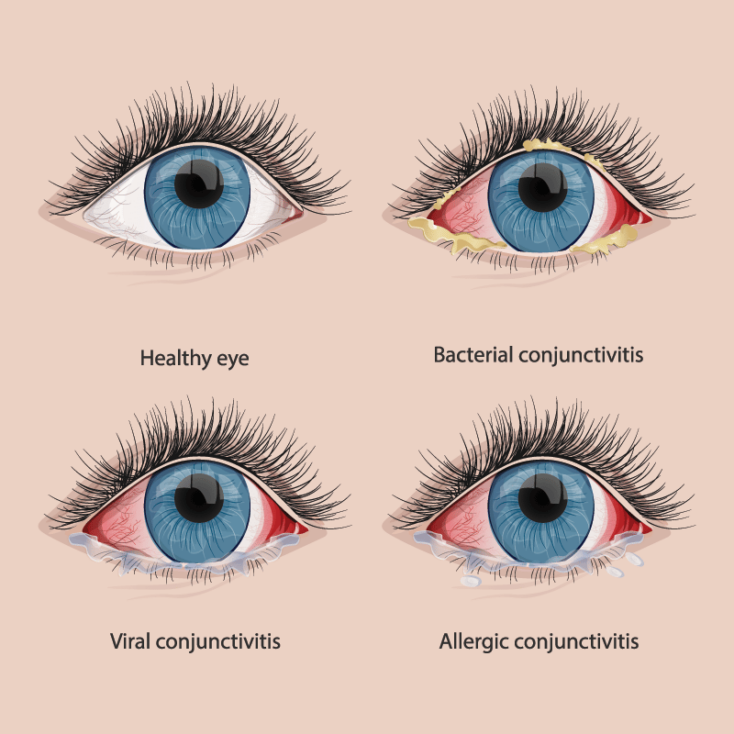
3. What causes eyelash extension infection?
As you’ve seen all types of eye infection above, so what causes eyelash extension infection?
- Unsterilized Tools: Using unclean or unsterilized tools is a major contributor to bad eyelash extension infections. To prevent the transfer of harmful bacteria, lash artists must ensure that all equipment is thoroughly sanitized before each use. When tools are not properly disinfected, bacteria can be introduced to the delicate lash line, increasing the risk of lash extension infections.
- Improper application techniques: When lash extensions aren’t applied correctly—such as gluing multiple natural lashes together or using too much adhesive—it can cause irritation and damage to the eyelids and lash follicles. This damage makes it easier for bacteria to enter, potentially leading to an lash extension infection.
- Low-quality lash adhesives: The adhesive used for lash extensions is essential for preventing lash extension infection. If the glue contains harsh chemicals or is improperly applied, it can irritate the skin, leading to allergic reactions or infections. To minimize these risks, always use high-quality adhesive from trusted suppliers and ensure it’s applied properly by a skilled professional.
- Poor pre-treatment: Improper cleaning the eyelids and removing makeup before lash application, particularly mascara and eyeliner can accumulate in the hair follicles, potentially leading to infections around the lash extensions and causing symptoms like blepharitis.
- Allergic reactions: Some individuals may experience allergic reactions to the adhesive used for lash extensions. These reactions can result in symptoms like redness, swelling, and inflammation
- Touching your eyes without cleaning hands: Touching your eyes with unwashed hands can introduce harmful germs and bacteria to the delicate eye area. These microorganisms can easily cause irritation or lead to infection, as the eyes are particularly vulnerable to contaminants.
- Neglecting aftercare instructions: Proper aftercare is essential to avoid eye infection after lash extensions. Sleeping on your face, rubbing your eyes, using oil-based products, or neglecting to clean the lash line can cause bacteria and debris to accumulate, increasing the risk of infection.
- Pre-existing eye conditions: People with conditions like dry eyes, blepharitis, or meibomian gland dysfunction may have a higher risk of developing infections after eyelash extensions due to pre-existing eye health issues.
How to treat eye infection from eyelash extensions?
If a client presents with symptoms of an eye infection after lash extensions, as a lash artist, you should guide them to follow these important things:
- Wash their face and eyes twice daily, always cleaning their hands before touching their eyes.
- Minimize makeup or mascara use to avoid further irritation.
- Use warm or cool compresses to soothe the eyes.
- Avoid allergens that triggered the reaction
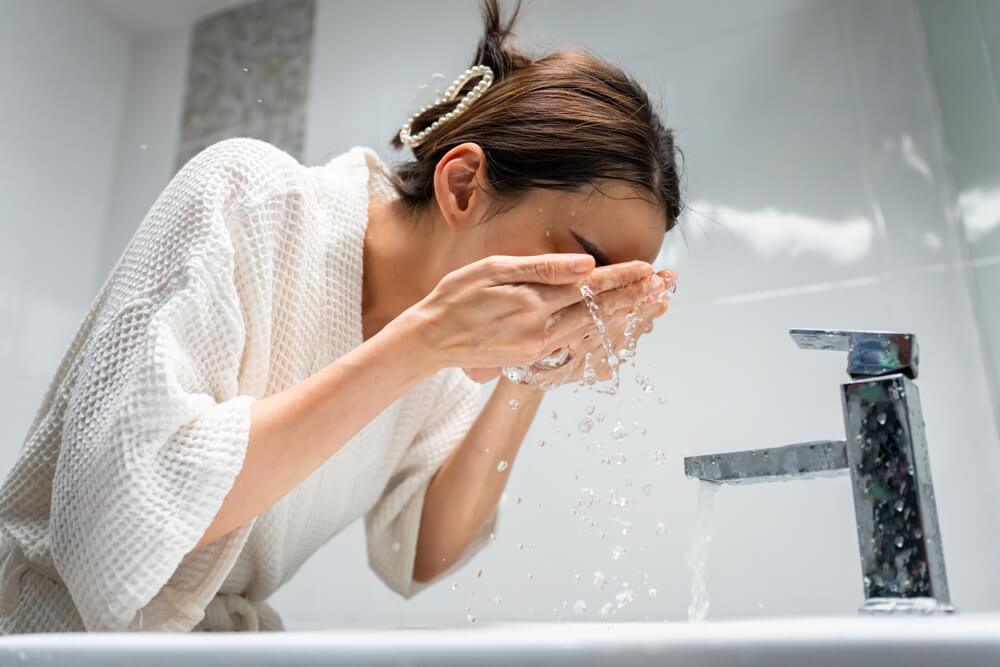
If symptoms persist, it’s crucial to advise them to remove lash extensions and seek medical attention immediately. Ignoring those signs or trying to treat them at home can worsen the infections. The doctor will determine the appropriate treatment, including antibiotics, antiviral medications, or anti-infective treatments in the form of eye drops, ointments, or tablets, depending on your symptoms and type of infection.
How to prevent eye Infections from lash extensions for your clients
We know that eye infections from lash extensions can happen by accident, and no one wants to experience that uncomfortable situation! However, as a professional, you need to advise your clients to follow this guidelines to protect their eyes from any harsh infection or potential damage:
- Avoid allergens that may trigger discomfort and take allergy medication to help manage symptoms and reduce the risk of further irritation
- Advise clients to avoid getting their lash extensions wet for at least 24 hours after application, as water can weaken the adhesive, leading to a higher risk of the lashes falling off or causing lash extension infection
- Wash their hands thoroughly before touching their eyes or lash extensions
- Avoid sharing items such as towels, eye makeup, or applicators that come into contact with their eyes as it can increase the risk of transferring bacteria and other pathogens
- Advise clients to seek medical help immediately if they notice severe infection symptoms
- Clean their eyelids daily using a gentle, lash-safe shampoo to eliminate debris and minimize the risk of bacteria buildup
- Remove their contact lenses before getting eyelash extensions
- Never try to remove lash extensions at home
Checklist for lash artists to prevent lash extension infection
As a lash artist, it’s essential to maintain the highest standards of hygiene and technique to prevent any eyelash extensions infected. So, follow this checklist to protect both yourself and your clients from potential lash extension infection:
- Use high-quality lash materials from reputable eyelash extension manufacturers. At CharmLash, we’re dedicated to providing premium-quality materials that are specially designed for lash extensions. All of our lash extension products are certificated by reputable organizations – MSDS, CoA & FDA, minimizing the risk of adverse reactions and helps prevent potential issues for your clients.
- Patch test for allergens before application and check for the ingredients in both lash glues and other products that will be used on the client’s eyes.
- Maintain a clean and hygienic environment when applying eyelash extensions. Ensure that the room is free from visible dirt or contaminants, and sanitize all tools before they come into contact with the client’s eyes.
- To safely remove eyelash extensions, it’s important to use a professional-grade lash remover that is specifically formulated for lash extensions. For a smooth removal process, we recommend our Strawberry lash cream remover! This effectively dissolves the adhesive within 1-2 minutes without damaging the natural lashes.
- Don’t use excessive adhesive or place extensions too close to the eyelid, as this can cause irritation and increase the risk of lash extension infection
- Educate clients about the importance of proper aftercare. For gentle cleansing, we recommend using a Gentle lash shampoo to maintain eyelash health and prevent irritation.
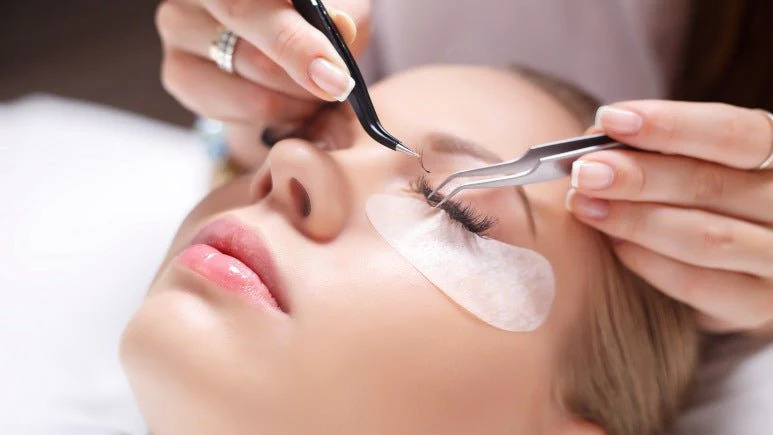
Conclusion
So, now that you have a better understanding of lash extension infection, it’s time to apply all these tips and knowledge to ensure your client’s eyes stay safe and healthy. Always remember that hygiene is essential in preventing any issues. By following these precautions, you’ll create a more comfortable and risk-free experience for your clients. Stay safe, take care, and keep your clients looking beautiful!
Follow us on Instagram for more helpful lash tips!
MAYBE YOU WANT TO KNOW MORE:
Red eyes after lash extensions and how to treat it















